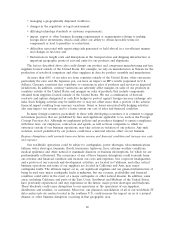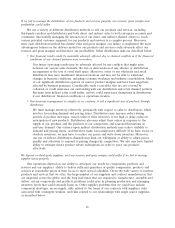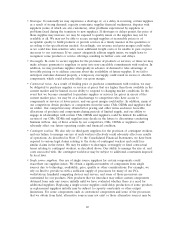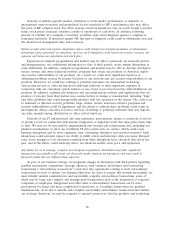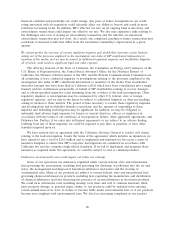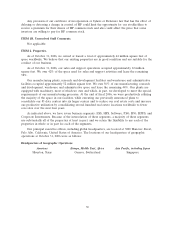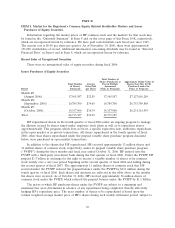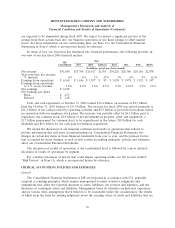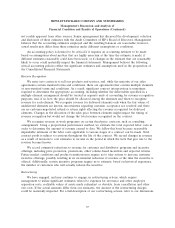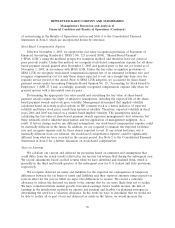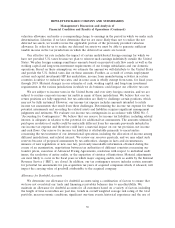HP 2006 Annual Report Download - page 33
Download and view the complete annual report
Please find page 33 of the 2006 HP annual report below. You can navigate through the pages in the report by either clicking on the pages listed below, or by using the keyword search tool below to find specific information within the annual report.design and procurement operations as we adjust to new and future requirements relating to the
materials composition of our products, including the restrictions on lead, cadmium and certain other
substances that apply to specified electronics products put on the market in the European Union as of
July 1, 2006 (Restriction of Hazardous Substances Directive) and similar legislation in China, the
labeling provisions of which go into effect on March 1, 2007 in China. The ultimate costs under
environmental laws and the timing of these costs are difficult to predict, and liability under some
environmental laws relating to contaminated sites can be imposed retroactively and on a joint and
several basis. It is our policy to apply strict standards for environmental protection to sites inside and
outside the United States, even when we are not subject to local government regulations. We also could
face significant costs and liabilities in connection with product take-back legislation. We record a
liability for environmental remediation and other environmental costs when we consider the costs to be
probable and the amount of the costs can be reasonably estimated. The EU has enacted the Waste
Electrical and Electronic Equipment Directive, which makes producers of electrical goods, including
computers and printers, financially responsible for specified collection, recycling, treatment and disposal
of past and future covered products. The deadline for the individual member states of the EU to enact
the directive in their respective countries was August 13, 2004 (such legislation, together with the
directive, the ‘‘WEEE Legislation’’). Producers participating in the market became financially
responsible for implementing these responsibilities beginning in August 2005. Implementation in certain
EU member states has been delayed into 2006 and 2007. HP’s potential liability resulting from the
WEEE Legislation may be substantial. Similar legislation has been or may be enacted in other
jurisdictions, including in the United States, Canada, Mexico, China and Japan, the cumulative impact
of which could be significant.
Some anti-takeover provisions contained in our certificate of incorporation and bylaws, as well as provisions
of Delaware law, could impair a takeover attempt.
We have provisions in our certificate of incorporation and bylaws, each of which could have the
effect of rendering more difficult or discouraging an acquisition of HP deemed undesirable by our
Board of Directors. These include provisions:
• authorizing blank check preferred stock, which HP could issue with voting, liquidation, dividend
and other rights superior to our common stock;
• limiting the liability of, and providing indemnification to, HP’s directors and officers;
• specifying that HP stockholders may take action only at a duly called annual or special meeting
of stockholders and otherwise in accordance with our bylaws and limiting the ability of our
stockholders to call special meetings;
• requiring advance notice of proposals by HP stockholders for business to be conducted at
stockholder meetings and for nominations of candidates for election to our Board of Directors;
• requiring a vote by the holders of two-thirds of HP’s outstanding shares to amend certain bylaws
relating to HP stockholder meetings, the Board of Directors and indemnification; and
• controlling the procedures for conduct of HP Board and stockholder meetings and election,
appointment and removal of HP directors.
These provisions, alone or together, could deter or delay hostile takeovers, proxy contests and
changes in control or management of HP. As a Delaware corporation, HP also is subject to provisions
of Delaware law, including Section 203 of the Delaware General Corporation Law, which prevents
some stockholders from engaging in certain business combinations without approval of the holders of
substantially all of HP’s outstanding common stock.
29



